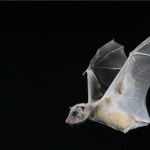grid cells
Not everyone gets their research written about by this week’s Nobel Prize winners:
All mammals face the challenge of navigating in complex, three-dimensional (3D) environments, whether they are swinging from branch-to-branch in forests or burrowing underground tunnels. How does the brain maintain a sense of place and direction in 3D? In a beautiful study published on Nature's website today, Finkelstein et al. report that bats have an internal neural compass that tracks direction in 3D during both surface locomotion and flight.
That’s from Prof. May-Britt Moser in Nature’s “News and Views.”…
This week's new Weizmann science stories are on ants and bats. Two different models for investigating human behavior? Yes, but not exactly in the ways you might imagine, and so much more than that.
Dr. Ofer Feinerman, the "ant scientist," is a new member of the Physics Faculty. In his graduate research under Prof. Elisha Moses in the Physics of Complex Systems Department, Feinerman created artificial circuits out of neurons. Now he has turned to investigating the complexities of ant societies. What, you might ask, do neurons and ant colonies have to do with physics? The answer is: They…
HOW does the brain encode the spatial representations which enable us to successfully navigate our environment? Four decades of research has identified four cell types in the brains of mice and rats which are known to be involved in these processes: place cells, grid cells, head direction cells and, most recently, border cells. Although the functions of most of these cell types are well characterized in rodents, it remains unclear whether they are also found in humans. A new functional neuroimaging study, by researchers from University College London, published online in the journal Nature,…
